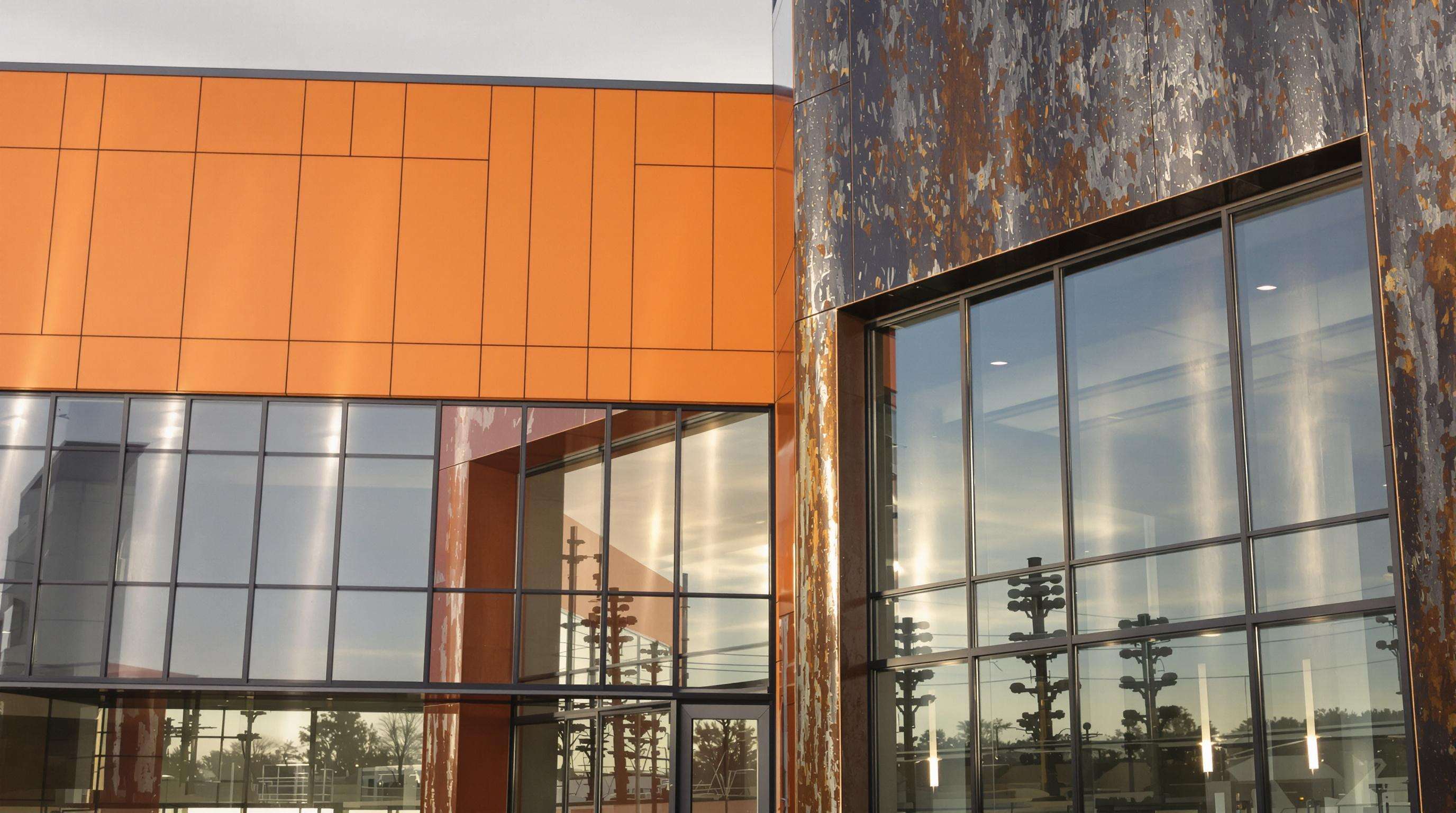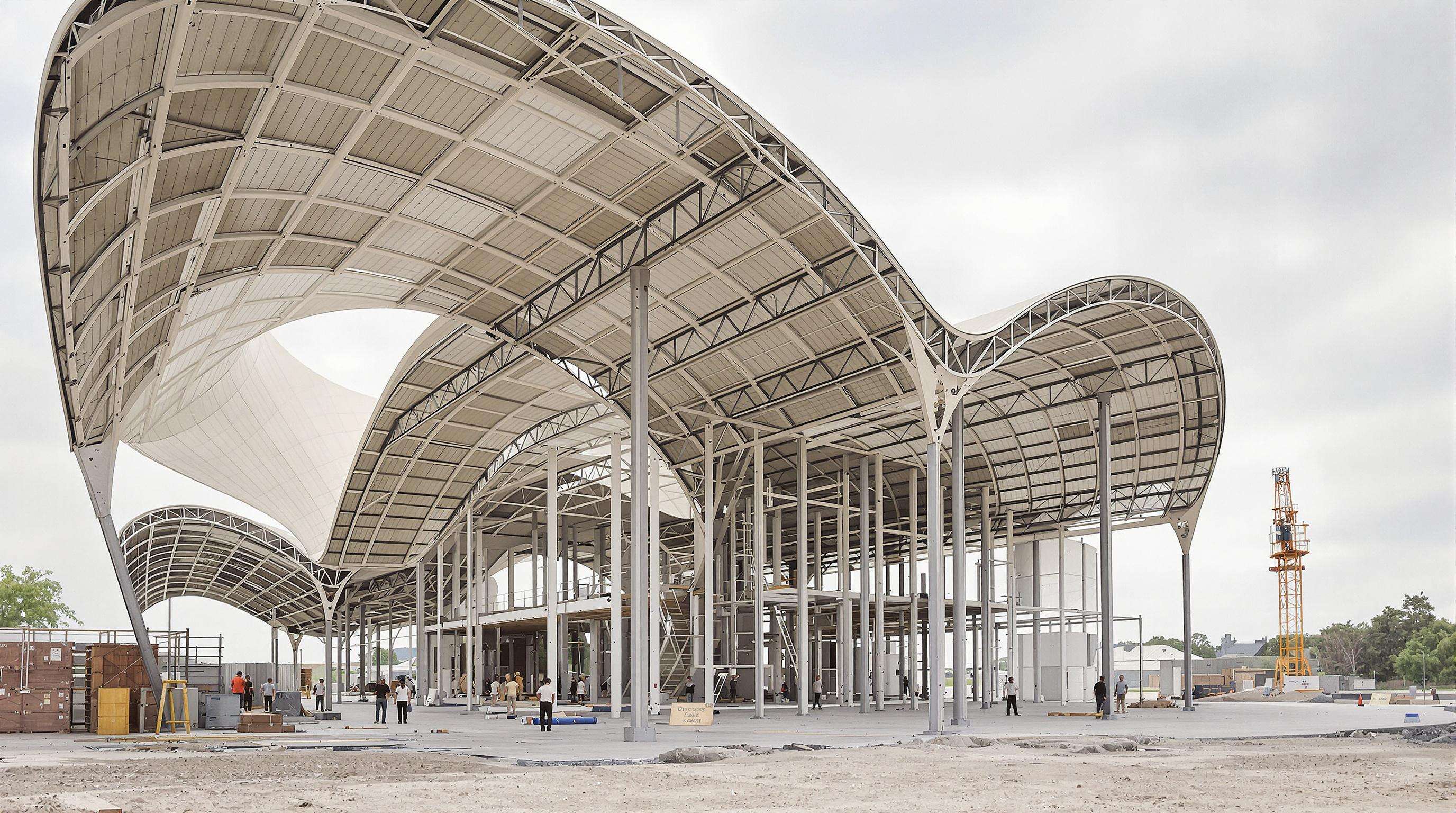Shifting Perceptions: From Industrial to Iconic
Steel buildings are no longer just seen as industrial eyesores but have become real eye catchers in modern architecture. What used to be limited mostly to factory floors and storage spaces is now standing proud in places like art museums, business parks, and even residential complexes. Why the change? Well, better fabrication methods combined with architects finally seeing what metal can do beyond just being strong. These days, designers take advantage of how light yet sturdy steel really is. They build those amazing overhanging sections and detailed metal frameworks that would never work with other materials. The result? Structures that look fantastic while still holding up under pressure. No need to choose between looking good and standing strong anymore.
Key Design Trends: Bold Colors, Textures, and Facades

Steel buildings today are getting facades coated with powders in bright orange shades and dark charcoal colors instead of those boring old gray tones we used to see everywhere. Architects often combine the natural rust look of aged steel with big glass walls or rough textured panels for some serious visual pop. With parametric design software, they can now create wavy surfaces and even print custom steel cladding pieces that change how the building looks depending on where the sun is shining. What this means is that steel buildings aren't just static boxes anymore but actually transform their appearance as daylight shifts throughout the morning till nightfall.
Global Inspiration: Iconic Custom Steel Buildings
Steel has become the backbone for ambitious architecture across the globe, from those crazy looking bioclimatic towers in Santiago right down to Singapore's impossible looking cultural centers that seem to float against gravity. Take the Shanghai Tower for instance it shows off what happens when engineers combine steel diagrid systems with creative vision, allowing buildings to stand tall while still curving dramatically. And it's not just about big sky scrapers either. Down on earth, old factories made of steel are getting new life as art spaces. Many former steel mills now host galleries where visitors can walk through massive beams that once formed part of industrial history. Around the world we see this same pattern emerging because steel simply works so well connecting our past manufacturing roots with today's bold architectural statements.
Customization as a Reflection of Brand and Architectural Identity
The Rise of Personalized Steel Building Design
These days architects are really getting creative with steel because of how flexible it naturally is, allowing them to build custom structures that go way beyond those standard industrial designs we've seen for decades. The reason? Clients want their spaces to reflect something special about who they are, whether it's green campuses focused on sustainability or cutting edge tech centers where innovation happens daily. Thanks to advances in fabrication methods, designers can now work with complex shapes and unusual sizes that just weren't possible before when using conventional building materials. When looking at custom steel construction, what stands out most is how well these buildings manage to balance artistic expression with solid structural performance requirements.
Aligning Building Aesthetics with Organizational Values
What buildings look like on the outside says a lot about who owns them. Green businesses tend to go for things like old steel that's been repurposed and those wall gardens we see so much these days. Tech startups usually prefer sleek metal surfaces that scream efficiency and modern thinking. Steel can be recycled again and again too most of it gets used over after its first life which makes sense for companies trying to cut their environmental impact. The way materials are chosen isn't just about looks anymore it actually reflects what kind of company they want to be seen as.
Case Study: Corporate Campuses Using Steel for Brand Expression
Take the case of a major manufacturer's new headquarters expansion. The building features colorful corrugated steel panels shaped like waves across its exterior, representing the company's innovative spirit. Inside, the campus has these big open atriums with lots of natural light coming through, held up by visible steel beams that create interesting shadows throughout the day. According to internal communications data from last year, employees felt about 32 percent better connected to the brand since moving there. How? Well, the way spaces are organized and what materials were chosen actually tells people something about who the company is. When workers walk past those wavy panels every morning, they're reminded of what makes their organization unique. Architecture isn't just functional anymore it's become part of how companies tell their story to both customers and staff alike.
Design Versatility: Innovations in Steel Building Materials and Forms

Material Flexibility and Creative Freedom in Steel Structures
Steel buildings today are making architectural breakthroughs that would have seemed out of reach just a few decades ago. The reason? Modern materials can bend and shape into curves, support cantilevers, and work well with prefabricated modules. According to the latest findings in the Steel Innovation Report for 2024, new alloy blends let designers build structures about 30 percent lighter than old school steel frames without sacrificing strength. We're seeing this flexibility in action everywhere these days. Think of those wavy roof lines at contemporary art museums or massive airport spaces where columns disappear entirely, creating open areas that feel almost weightless.
Innovative Exterior Finishes and Surface Treatments
Architects now leverage cutting-edge finishes to transform steel’s industrial aesthetic:
- Corrosion-resistant nanocoatings that retain color vibrancy for 25+ years
- Textured panels mimicking natural materials like wood or stone
- Reflective surfaces that reduce urban heat island effects by deflecting sunlight
These treatments allow steel buildings to harmonize with environments ranging from alpine resorts to coastal corporate hubs.
Case Study: Hybrid Steel-Concrete Designs in Commercial Architecture
A 2023 mixed-use development in Seattle demonstrates steel’s synergy with concrete through:
| Design Feature | Steel’s Role | Concrete’s Role |
|---|---|---|
| Foundation | Lightweight support beams | Earthquake-resistant core |
| Façade | Perforated sunshades | Thermal mass insulation |
| Interior | Open-plan structural frame | Acoustic flooring |
This hybrid approach reduced construction timelines by 18% while achieving LEED Platinum certification, proving steel’s capacity to balance innovation with sustainability.
Balancing Aesthetic Appeal with Functional Performance
Modern architecture demands steel buildings that excel visually while maintaining structural integrity—a dual expectation now prioritized in 68% of commercial projects according to industry analysis. Clients seek designs that serve as functional assets and community landmarks simultaneously, driving increased adoption of steel solutions.
The Dual Demand: Beauty and Structural Efficiency
Steel’s innate strength enables bold forms that traditional materials cannot achieve, while its flexibility allows for innovative shapes. Projects now integrate seismic resilience and thermal efficiency without compromising visual impact, with over 75% of architects reporting steel as essential for balancing these priorities in large-scale developments.
Design Harmony: Integrating Form and Function
Successful projects marry sweeping rooflines with practical elements like natural lighting systems and ventilation pathways. Corrugated metal facades, for instance, provide texture while enhancing weather resistance. This holistic approach reduces maintenance costs by up to 30% compared to conventional designs according to construction benchmarks.
Case Study: Recreational Facilities with High Visual and Practical Value
One regional sports complex exemplifies this equilibrium. Its wave-inspired steel canopy creates an iconic silhouette while shielding spectators from elements. The clear-span design accommodates multipurpose courts unobstructed by columns. Post-construction surveys noted 40% higher user satisfaction tied to both the facility’s aesthetics and adaptable functionality.
FAQ Section
What makes steel buildings aesthetically appealing today?
Steel buildings have evolved to feature bold colors, textures, and customized facades, transforming their appearance and making them visually attractive.
Why is steel used in large-scale modern architecture?
Steel provides strength and flexibility, allowing for innovative designs and shapes that traditional materials cannot achieve, making it essential for modern architectural projects.
How do steel structures align with environmental sustainability?
Steel can be recycled repeatedly, reducing its environmental impact, making it a preferred choice for environmentally conscious companies.
How do steel buildings represent organizational identity?
Steel buildings allow customization and reflect unique company values, helping businesses to express their identity through architecture.
What is the significance of hybrid steel-concrete designs?
Hybrid designs leverage the strengths of both materials, optimizing construction efficiency while balancing innovation and sustainability.

